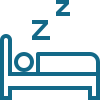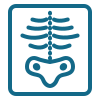Nursing care for Cardiac Catheterization
At Medintu, we understand the critical role of cardiac catheterization in diagnosing and treating heart conditions. Nursing care is crucial in ensuring patients safety, comfort, and positive outcomes throughout the procedure. We are a highly recognized and trustworthy at-home healthcare company that offers a variety of health services delivered to you in the comfort of your own home. So, if you want cardiac catheterization care at home, please contact us on the Medintu portal and an experienced nurse will be at your door as soon as possible. By creating a positive and healthy environment we all can overcome this phase together. Book your appointment now at Medintu and reserve your slot!!

Fill out form to enquire now
What Is Cardiac Catheterization?
Cardiac catheterization is test or treatment for certain heart or blood vessel problems. It is a term for a group of medical procedures that involve methodology like coronary angiography, left ventricle angiography, coronary angioplasty, balloon septostomy, electrophysiology study an many more.
Services Offered
Cardiac catheterization diagnosis uses:
Cardiac catheterization is generally not recommended for individuals with pre-existing heart conditions. However, it is a valuable diagnostic tool for various other diseases, including:
- Heart attack
- Abnormal stress test results
- Onset of unexplained heart failure
- Survival after sudden cardiac arrest
- Cardiac arrhythmia
- Persistent chest pain
- Suspected Prinzmetal angina
- Measuring intra-cardiac and intravascular blood pressures
- Collecting tissue samples for biopsy
- Injecting various fluids to assess blood flow within the heart
- Detecting intra-cardiac shunts
- Administering contrast agents to visualize the structure of heart vessels and chambers
What are the types of cardiac catheterization?
- Coronary angiogram : The most common catheterization test looks for the blocked arteries typically associated with heart disease. A cardiologist injects a special contrast dye that shows up on low-dose X-rays and tracks the flow of blood.
- Fractional flow reserve (FFR): This test can help clarify the need for treatment, if a standard angiogram shows that an artery is only modestly narrowed. We thread a wire with a pressure sensor past the spot in question, to compare blood flow and pressure on each side. We can determine when you need a stent and when medication alone is enough
- Intravascular ultrasound (IVUS): We attach an ultrasound probe to the end of a catheter to see inside arteries and make measurements if the vessels are narrowed or blocked. This technique often provides more information than a standard angiogram and can help plan the most appropriate treatment.
- Optical coherence tomography (OCT): Like intravascular ultrasound, OCT uses a probe, but one that emits light waves instead of sound waves. OCT offers much greater resolution than IVUS, with the ability to see tiny details inside an artery.
- Arterial Catheterization: An arterial catheter is a thin, hollow tube that is placed into an artery (blood vessel) in the wrist, groin, or other location to measure blood pressure more accurately than is possible with a blood pressure cuff.
- Cardiac biopsy catheter: A long tube (catheter) called a bioptome is passed through a small incision on the right side of the neck then down into your heart.
- Column disk catheter: The column-disc catheter is a peritoneal access device which is affixed to the lower anterior abdominal wall. A large peripheral port allows inflow and outflow of peritoneal fluid with a fluid velocity 20 times less than that of the Tenckhoff catheter.
Cardiac Catheter Care
Proper care following a cardiac catheterization is essential to minimize the risk of infection or internal injury. Here are some basic tips for post-procedure care:
- You can remove the dressing one day after the procedure.
- After removing the dressing, cover the area with an adhesive bandage.
- It is normal for the catheter insertion site to show bruising for a few days.
- There may be slight swelling at the catheterization site.
- Gently clean the catheterization site daily with soap and water.
- Always keep the site clean and dry.
- Avoid using creams and lotions on the catheterization site.
- Wear loose and comfortable clothing to avoid disturbing the catheter site.
- Avoid soaking in a bathtub, Jacuzzi, or swimming for one week after the procedure.
Just Fill Up The Form We'll Take Care Of The Rest!
Services Available in India
Why choose Medintu for cardiac catheterization?
Choosing Medintu means opting for best healthcare services delivered by a team of experienced professionals dedicated to patient care and excellence. We offer a wide range of services, from diagnostics to treatment and follow-up care, ensuring all your medical needs are met under one roof. Medintu ensures accurate diagnoses and effective treatments. Our patient-centred approach prioritizes comfort and satisfaction, providing personalized and compassionate care to everyone. With convenient options like flexible appointment scheduling, home healthcare services, accessing quality healthcare has never been easier. Beyond medical treatments, Medintu focusses more on overall wellness through preventive care, health education, and lifestyle counselling. Choose Medintu for a healthcare experience that combines advanced medical expertise with compassionate care, ensuring the best possible treatment for you and your loved ones. Book your appointment now at Medintu and reserve your slot today!!
FAQs
Which is the most common complication during cardiac catheterization?
Hematoma/Retroperitoneal Bleeding.
These are some of the most common problems encountered following cardiac catheterization operations. Hematomas are typically developed due to poorly regulated hemostasis following sheath removal.
Can a heart cath cause a stroke?
Stroke resulting from cardiac catheterization is relatively common due to the high volume of cardiac procedures performed worldwide. This article will go over periprocedural stroke during cardiac catheterization, including diagnostic and interventional techniques.
Is AFIB common after cardiac catheterization?
It is common for patients undergoing cardiac catheterization to have atrial fibrillation (AF)
What happens if a catheter is left in too long?What is the most common site for cardiac catheterization?
Your doctor will insert a tiny, flexible, hollow tube (called a catheter) into a blood vessel in the groin, arm, or neck during cardiac catheterization (also known as cardiac cath). The catheter is then passed into the blood vessel, into the aorta, and into the heart.
How can I schedule nursing care for cardiac - catheterization?
You can make a schedule for nursing care for cardiac catheterization using the medintu online portal or contact us.
How often should I schedule check-ups?
Generally, once a year for a routine physical, but it may vary based on your age and health condition.
What are the visiting hours for patients?
Visiting hours are typically from 9 AM to 8 PM, but they may vary by department.












